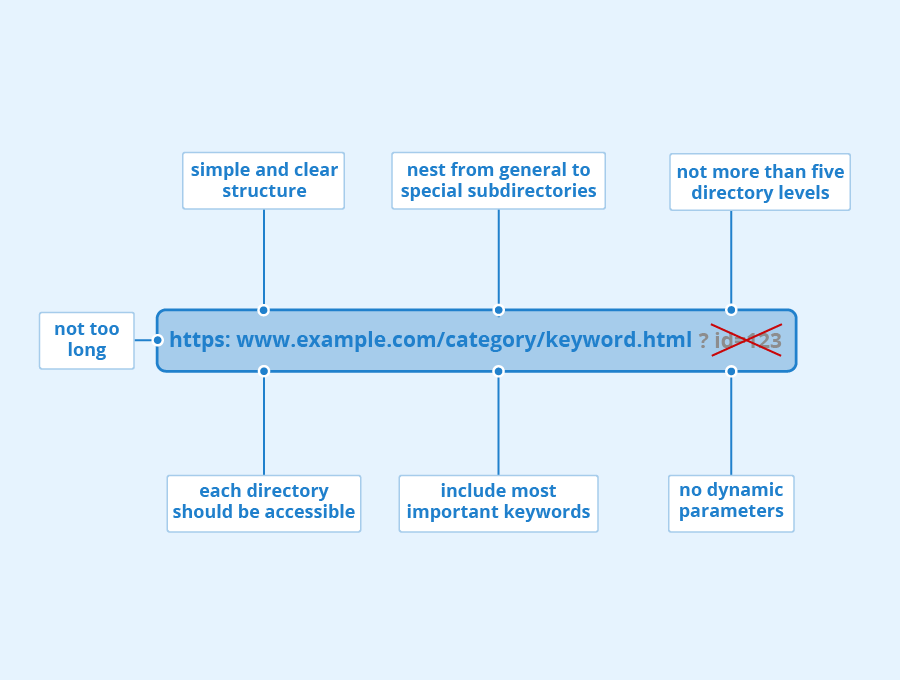What is a Slug?
A slug, part of the permalink, is the portion of a URL that points to a specific page on a website. Slugs usually contain the name of the page or article (or a shorter version of it), using dashes in place of spaces.

More About Slugs
Anatomy of a URL
Every URL has a syntax structure that contains several different components. The Uniform Resource Locator (URL) is made up of four main parts: the protocol, the domain, the path, and the parameters.
The Protocol
A URL protocol is a standardized set of rules for transferring data over the internet. The most commonly used protocol is HTTP, which stands for Hypertext Transfer Protocol. This protocol is used to transmit a Hypertext Markup Language (HTML) document from a web server to an internet browser. Other protocols include HTTPS (Secure HTTP), FTP (File Transfer Protocol) and SSH (Secure Shell).
The purpose of using a URL protocol is to transfer data between two computers in the most efficient way possible. When you type in a website address into your browser, your computer sends out a request using one of these protocols, and then waits for the server to respond with the HTML code that’s needed to display the webpage.
The Domain/Hostname
The domain (or hostname) is where the web page lives, and typically appears after the protocol in the URL. For example “https://www.example.com.”
The Path
The path follows the domain and specifies location within that particular domain – for example “/anatomy-of-a-url/” in “https://www.exmaple.com/anatomy-of-a-url”. The last part of this path is known as a slug, which describes a unique piece of content on a page. In this case it’s “anatomy-of-a-url”.
The main difference between path, slug and permalink is that paths can refer to multiple pieces of content on one website, whereas permalinks are used to refer to one specific piece of content at any given time. Additionally, paths may include parameters such as query strings which don’t appear in slugs or permalinks.
URL Parameters
Finally, parameters are optional pieces of information that may appear after the path in some URLs – for example “?query=term” in “https://www.example.com/anatomy-of-a-url?query=term” would tell us what query term was used to generate this page view. Parameters can be used to further refine information displayed on pages when more than one option exists.
The Difference Between a Path, Permalink, and Slug
Paths, slugs and permalinks are all related to the URLs for a website, but have distinct roles. Paths provide a destination within a domain for the URL, in order to reach a specific page or piece of content.
Slugs are the last part of a path and represent a unique piece of content – they help identify the content so that visitors can more easily remember and find it.
Permalinks (or permanent links) are the URLs for posts, pages and other pieces of content on your website, including their paths and slugs. Permalinks never change, meaning you can always link back to them no matter how many times you edit your page or post.
How Slugs Affect SEO

Slugs can be a great tool for SEO, since they help search engines understand the content of a page. They also make it easier for searchers to find and remember pages, by offering concise and descriptive summaries. For example, a website about dogs may have a slug such as “best-small-dog-breeds,” which easily communicates the content of the page to both search engine bots and users alike.
In addition, slugs are important for popularity on social media platforms. Because many social media users share links by pasting in the full URL, having an SEO-friendly slug is essential to getting your content noticed. A catchy, easy-to-remember slug that accurately reflects your post’s content will boost its visibility and help you reach more people with your message.
Overall, if you want your website to rank higher in search results and increase its shareability, making sure that your slugs are SEO-friendly is key. This means using lowercase letters (instead of uppercase), avoiding special characters (such as & or #) and making sure each word is separated by either a hyphen or an underscore. Additionally, aim for short yet descriptive slugs that accurately describe what’s on the page.


